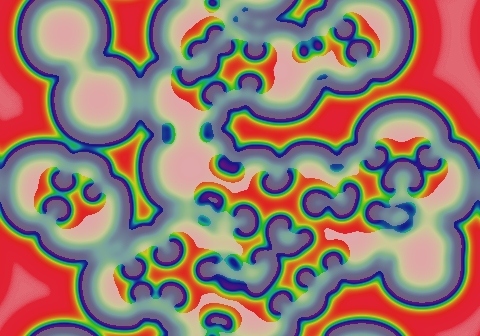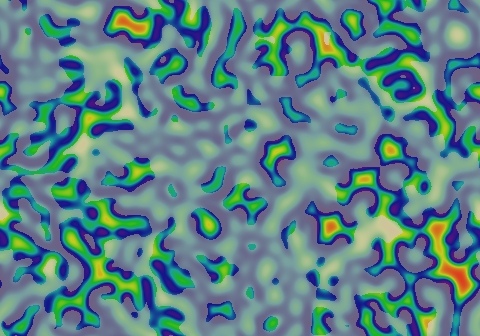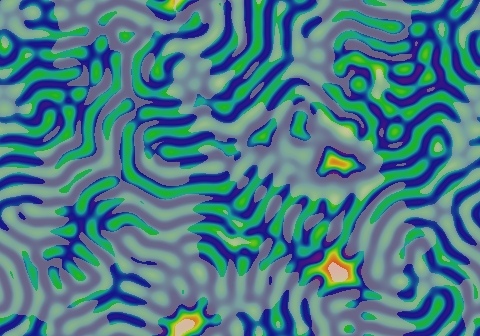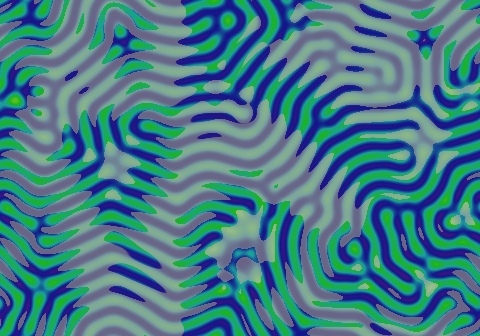Gray-Scott Model at F 0.0220, k 0.0510
These images and movie demonstrate the behavior of the Gray-Scott reaction-diffusion system with σ=Du/Dv=2 and parameters F=0.0220, k=0.0510.
Spots grow with smooth outer edges, then after colliding proto-spirals appear briefly inside. The system then passes through a phase resembling the area directly to the west, but a pattern of recognizable negative stripes and spots emerges by about the 2500 tu. Oscillation continues indefinitely, and small areas periodically revert to the red state briefly. When this happens a small region of the stripes/spots pattern is rebuilt; through such events the pattern evolves towards many straight parallel stripes at 60o and 120o angles.
Categories: Pearson γ; Wolfram 3 (glossary of terms)
 increase F increase F
 | |||
 decrease k  |


|
15 frames/sec.; each fr. is 35 iter. steps = 17.5 tu; 1800 fr. total (31,500 tu) |  increase k 
|

|


| ||
 decrease F decrease F
 |
In these images:
- Color indicates level of u, ranging from purple (lowest u values) through blue, aqua, green, yellow and pink/red (highest u values)
- Areas where u is increasing are lightened to a light pastel tone; where u is decreasing the color is vivid.
- In areas where u is changing by less than ±3×10-6 per tu, an intermediate pastel color is seen. This includes areas that are in steady state or equilibrium.
''tu'' is the dimensionless unit of time, and ''lu'' the dimensionless unit of length, implicit in the equations that define the reaction-diffusion model. The grids for these simulations use Δx=1/143 lu and Δt=1/2 tu; the system is 3.2 lu wide. The simulation meets itself at the edges (periodic boundary condition); all images tile seamlessly if used as wallpaper.
Go back to Gray-Scott pattern index
This page was written in the "embarrassingly readable" markup language RHTF, and was last updated on 2019 Jan 05.
 s.11
s.11